A 1940 nickel’s value depends on condition, mint mark, and errors. Most circulated examples are worth a few dollars or less, but high-grade specimens and error coins command premium prices.
The 1940-D (Denver) had the highest mintage at 53,432,000 coins, making it common. The 1940-S (San Francisco) is slightly scarcer with 39,690,000 minted. Philadelphia coins bear no mint mark and are also common unless they feature specific errors.
Valuable varieties include the 1940-D Double Die Reverse (DDR) showing doubling on reverse lettering, and high-grade examples like MS68FS coins selling for around $115. Error coins featuring strike-throughs, off-center strikes, or planchet errors are worth significantly more than standard pieces. Rare errors can fetch prices up to $28,150, though most 1940 nickels remain affordable collectibles valued primarily by their preservation quality.
The 1940 Jefferson nickel represents an interesting period in American coinage history, struck during the early years of World War II. While most examples trade for modest premiums, certain varieties and high-grade specimens can command prices that surprise collectors. Understanding the differences between mint marks, recognizing valuable errors, and knowing what grade truly matters can mean the difference between spending face value and discovering a coin worth hundreds or even thousands of dollars.
Understanding the Three 1940 Nickel Varieties
The United States Mint produced Jefferson nickels at three facilities in 1940, each leaving its distinctive mark on the coins. The mint mark appears on the reverse side, to the right of Monticello.
1940 Philadelphia (No Mint Mark): With a mintage of 176,499,158 pieces, this is the most common variety. Philadelphia coins from this era carried no mint mark, which was standard practice. In circulated grades from Good-4 to Fine-12, expect values between $0.10 and $0.50. Extra Fine-40 examples typically sell for $1.50 to $2.50, while About Uncirculated-50 coins fetch $3 to $5. The real value emerges in Mint State conditions: MS-63 specimens range from $12 to $18, MS-65 examples command $45 to $65, and pristine MS-67 coins can reach $350 to $500.
1940-D Denver: The Denver Mint struck 53,432,000 nickels, making this a readily available variety. Pricing parallels the Philadelphia issue in lower grades, with Good-4 through Fine-12 examples worth $0.15 to $0.75. The premium increases slightly in higher circulated grades, with AU-50 coins valued at $4 to $6. Uncirculated examples show similar pricing to Philadelphia strikes in MS-63 ($15 to $22) and MS-65 ($50 to $75), but exceptional MS-68 specimens with Full Steps designation have sold at auction for $1,200 to $1,500.
1940-S San Francisco: The scarcest of the three with 39,690,000 minted, the San Francisco issue carries modest premiums in most grades. Circulated examples from Good-4 to Very Fine-20 range from $0.20 to $1.25. Extra Fine-45 coins typically sell for $2.50 to $4, while AU-58 specimens command $6 to $9. The San Francisco mint mark adds significant value in higher Mint State grades: MS-65 examples reach $85 to $125, MS-66 coins sell for $200 to $350, and exceptional MS-67 specimens have brought $800 to $1,200 at major auctions.
The Full Steps Premium Phenomenon
Jefferson nickel collectors pay substantial premiums for coins displaying Full Steps (FS) on Monticello’s front portico. This designation requires five or six complete, unbroken horizontal steps visible on the building’s facade. Most 1940 nickels show weak or incomplete steps due to die wear and striking pressure variations.
A standard 1940-D in MS-65 condition sells for approximately $65, but add the Full Steps designation and the value jumps to $450 to $650. The 1940-S shows even more dramatic differences: an MS-65 without Full Steps brings $100, while an MS-65 FS commands $850 to $1,100. The 1940 Philadelphia MS-66 FS reaches $1,500 to $2,200, compared to $125 to $175 for a standard MS-66.
At the highest grade levels, Full Steps coins become extremely rare. A 1940-D graded MS-68 FS sold through Heritage Auctions in 2019 for $28,150, representing one of the finest known examples. For comparison, fewer than ten 1940-D nickels have been certified at the MS-68 FS level by PCGS and NGC combined.
| Grade | 1940 Philadelphia | 1940-D Denver | 1940-S San Francisco |
|---|---|---|---|
| G-4 | $0.10 | $0.15 | $0.20 |
| F-12 | $0.50 | $0.75 | $1.00 |
| EF-40 | $2.00 | $2.50 | $3.50 |
| AU-50 | $4.00 | $5.00 | $7.00 |
| MS-63 | $15.00 | $18.00 | $25.00 |
| MS-65 | $55.00 | $65.00 | $100.00 |
| MS-65 FS | $500.00 | $550.00 | $950.00 |
| MS-67 | $400.00 | $450.00 | $1,000.00 |
| MS-67 FS | $4,500.00 | $6,000.00 | $8,500.00 |
Critical Error Varieties Worth Finding
Several error types affect 1940 nickels, with varying degrees of rarity and value. Understanding these errors helps collectors identify potentially valuable coins in circulation finds or dealer bins.
1940-D Doubled Die Reverse (DDR): The most significant error variety for the year, this shows clear doubling on reverse lettering, particularly visible on “MONTICELLO” and “FIVE CENTS.” Several die varieties exist, with the strongest showing pronounced separation between doubled elements. In Very Fine condition, these sell for $85 to $125. Extra Fine examples command $175 to $250, while Mint State specimens range from $450 in MS-63 to $1,800 in MS-65. A PCGS MS-66 example sold in 2021 for $3,250.
Off-Center Strikes: When the planchet doesn’t align properly with the dies, the resulting off-center strike shows missing portions of the design. Value depends on the percentage off-center and whether the date remains visible. A 5% off-center strike with full date adds $15 to $25 in circulated grades. 10% to 15% off-center errors bring $40 to $75. Dramatic 25% to 40% off-center strikes with complete dates command $150 to $350, while 50% or more off-center can reach $500 to $800 depending on eye appeal.
Struck Through Grease Errors: When grease or debris fills the die, resulting coins show weak or missing design elements. Minor grease-filled die strikes add $5 to $15 in any grade. More dramatic examples with significant design obscuration sell for $25 to $75. Completely struck-through errors showing ghost images command $100 to $200.
Clipped Planchets: These occur when the metal strip used to punch planchets overlaps, creating a blank with a curved or straight clip. Straight clips measuring 5% to 10% of the planchet add $20 to $40. Curved clips of 10% to 15% bring $35 to $65. Large clips removing 25% or more of the planchet sell for $100 to $250, with the highest values for coins retaining complete dates and mint marks.
Lamination Errors: Impurities in the metal alloy cause the planchet to separate in layers, either before or after striking. Minor laminations add $8 to $20. Significant peeling covering major design elements commands $40 to $80. Complete lamination separations where a layer has detached sell for $100 to $175.
Broadstrike Errors: When the retaining collar fails to contain the planchet during striking, the coin spreads beyond normal diameter. These errors show complete designs but measure larger than standard 21.2mm. Typical broadstrikes add $35 to $65 in any condition. Extreme examples measuring 25mm or more command $125 to $200.
Grading Nuances That Affect Value
Jefferson nickels present specific grading challenges that significantly impact value. Understanding these subtleties helps collectors make informed purchasing decisions and avoid overgraded coins.
The highest points of wear appear first on Jefferson’s cheekbone and hair details above the ear. On the reverse, Monticello’s pillars and steps show wear earliest. A coin grading About Uncirculated-50 displays light wear on these high points but retains most mint luster. AU-58 coins show only the slightest friction on the highest design elements.
Mint State coins show no wear but vary dramatically in quality. MS-60 to MS-62 nickels display numerous contact marks, particularly on Jefferson’s cheek and the open fields. These represent the bottom tier of uncirculated coins. MS-63 to MS-64 examples show fewer marks with better eye appeal and sharper strikes. The premium tier begins at MS-65, requiring minimal contact marks, strong luster, and good strike definition.
Strike quality varies significantly among 1940 nickels. Weak strikes show flattened hair details on Jefferson and incomplete steps on Monticello. Strong strikes display full hair separation and complete step definition. Two coins of the same technical grade can differ in value by 50% or more based solely on strike quality.
Original toning adds value when attractive. Light golden or pale gray tones are desirable. Darker toning or uneven coloration typically reduces value unless particularly eye-appealing. Avoid coins with cleaning scratches, harsh dips, or artificial toning, as these significantly reduce collector demand.
Authentication and Purchase Strategies
Building a valuable 1940 nickel collection requires knowledge of authentication, grading services, and market dynamics. Smart collectors employ specific strategies to maximize value while minimizing risks.
For coins valued above $100, third-party grading through PCGS or NGC provides authentication and grade verification. Grading fees range from $20 to $50 depending on service level and coin value. The holder protects the coin while providing liquidity advantages in the marketplace. Ungraded coins selling for premiums above $50 deserve scrutiny. Request high-resolution images showing both sides and edge details.
Counterfeit 1940 nickels are uncommon compared to other denominations, but altered dates exist. Examine the date and mint mark under magnification for signs of tooling, added metal, or inconsistent patina. Genuine coins show uniform metal flow in the date area. Altered coins often display suspicious tooling marks or color differences.
When purchasing raw (ungraded) coins, compare asking prices against certified examples of similar quality. A dealer claiming MS-65 quality should price accordingly. If the coin costs significantly less than certified MS-65 examples, it likely doesn’t merit that grade. Conservative grading by sellers often indicates honesty, while aggressive grading suggests problems.
Auction venues offer opportunities for value purchases. Heritage Auctions, Stack’s Bowers, and GreatCollections regularly feature 1940 nickels. Auction records provide valuable pricing data. A coin that sold for $500 three years ago likely commands $550 to $650 today based on general market appreciation.
Local coin shows allow hands-on examination before purchase. Bring a 10x loupe and portable scale. Genuine 1940 nickels weigh 5.00 grams with a tolerance of ±0.05 grams. Significantly different weights indicate problems. The diameter measures 21.2mm, and thickness runs 1.95mm.
Building a Complete Date and Mint Mark Set
Collectors approaching 1940 nickels have several strategies depending on budget and goals. A basic three-coin set including one example of each mint mark in circulated condition costs $5 to $15 total. This represents an affordable entry point showcasing all three varieties.
An upgraded circulated set in Extra Fine condition runs $15 to $30 and displays considerably more detail than lower grades. These coins show Jefferson’s hair definition and complete building details on Monticello while remaining affordable.
A Mint State type set with one MS-63 or MS-64 example from each mint costs $150 to $250. This provides attractive uncirculated coins without the premiums commanded by gem grades. Most collectors find this level offers the best balance of quality and value.
Serious specialists pursue Full Steps examples across all three mints. An MS-65 FS three-coin set requires $2,000 to $3,000 and represents a significant achievement. Fewer than 200 collectors have assembled complete MS-65 FS sets including all three 1940 varieties.
Error collectors focus specifically on varieties like the 1940-D Doubled Die Reverse, off-center strikes, and other production anomalies. A representative error collection spanning multiple error types costs $500 to $1,500 depending on grade and rarity.
Registry set competitors through PCGS or NGC aim for the highest possible grades with Full Steps designations. Top-ranked 1940 sets require MS-67 FS or MS-68 FS coins across all three mints, representing investments exceeding $25,000 and years of patient acquisition.
Market Trends and Future Outlook
The 1940 nickel market has shown steady appreciation over the past two decades, with certain segments outperforming others. Understanding these trends helps collectors make informed decisions about which coins offer the best combination of enjoyment and investment potential.
Full Steps coins have appreciated most dramatically. A 1940-S MS-65 FS that sold for $425 in 2005 now brings $950 to $1,100, representing 123% growth. Standard MS-65 coins without Full Steps showed more modest gains, rising from $65 to $100 during the same period, a 54% increase.
High-grade coins at the MS-67 and MS-68 levels have seen exceptional appreciation due to population constraints. The 1940-D MS-68 FS that sold for $28,150 in 2019 had previously sold for $14,100 in 2012, representing nearly 100% growth in seven years. Only three examples exist at this grade level according to combined PCGS and NGC populations.
Error varieties maintain strong collector interest. The 1940-D Doubled Die Reverse has appreciated from $300 in MS-63 fifteen years ago to $450 today. Major off-center errors and dramatic clips have similarly increased 40% to 60% during the same period.
Circulated examples in grades below Extra Fine show minimal appreciation, typically rising only with base metal value and inflation. These serve collection purposes rather than investment goals. The sweet spot for appreciation combines quality (MS-65 or better), eye appeal (Full Steps when possible), and scarcity (San Francisco mint or error varieties).
Where to Sell Your 1940 Nickels
Once you’ve identified a valuable 1940 nickel, several selling venues offer different advantages. Local coin shops provide immediate payment but typically offer 60% to 75% of retail value. This works well for coins worth under $100 where convenience outweighs maximum return.
Online marketplaces like eBay reach broad audiences but involve fees totaling 12% to 15% of the final price. This venue suits coins valued between $100 and $1,000 where the larger buyer pool justifies the fees. Professional photographs and accurate descriptions are essential for success.
Major auction houses including Heritage, Stack’s Bowers, and GreatCollections specialize in certified coins worth $500 or more. Consignment fees range from 10% to 20% depending on the coin’s value and your consignment agreement. Auction houses provide expert cataloging, professional photography, and access to serious collectors willing to pay strong prices for quality material.
For coins worth several thousand dollars, particularly MS-67 or MS-68 Full Steps examples, auction houses represent the best option. A 1940-S MS-67 FS consigned to a major auction will reach collectors actively seeking that specific coin at that grade level. The same coin offered locally might sit for months without finding the right buyer.
Getting your 1940 nickel certified before selling adds credibility and often increases the final price by more than the grading cost. A raw coin claimed as MS-65 FS might sell for $400 due to buyer uncertainty. The same coin in a PCGS MS-65 FS holder commands $550 to $650 because the grade is guaranteed.
Starting Your Search Today
Whether you’re examining inherited coins, searching coin roll hunting finds, or considering a purchase, knowing what separates common 1940 nickels from valuable varieties gives you a significant advantage. Check that 1940-D for doubled reverse lettering before spending it. Examine Monticello’s steps under magnification on any uncirculated example. Look for the San Francisco mint mark, which adds value in higher grades.
Begin with affordable circulated examples to learn the series, then upgrade selectively to Mint State coins as your knowledge and budget grow. Focus on quality over quantity—one exceptional MS-66 Full Steps coin provides more satisfaction than ten average MS-63 examples. The 1940 nickel offers collecting opportunities at every budget level, from pocket change finds to five-figure rarities that anchor world-class collections.
You may be interested:
- 1859 Indian Head Penny Coin Value Complete Errors List And No Mint Mark Worth Guide For Collectors
- 1911 V Nickel Coin Value Guide Complete Errors List And No Mint Mark Worth Today
- 1902 Dime Coin Value Complete Errors List With O S And No Mint Mark Worth Guide
- 1788 Quarter Coin Value Complete Guide Errors List And D S P Mint Mark Worth Revealed
- 1776 To 1976 Bicentennial Half Dollar Coin Value Complete Errors List And What Your D S And No Mint Mark Coins Are Actually Worth
- 1990 Penny Coin Value Errors List How D S And No Mint Mark Pennies Are Worth Thousands Of Dollars

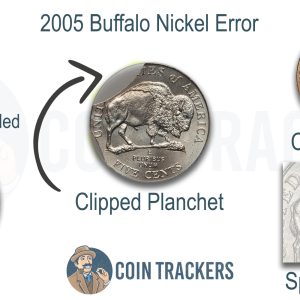
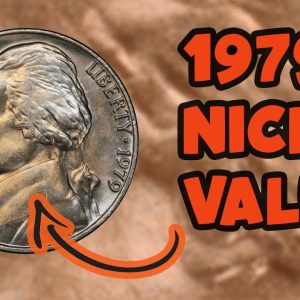
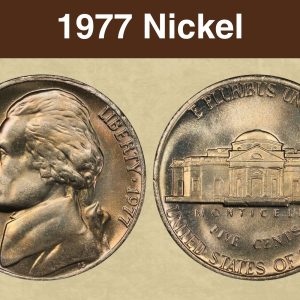
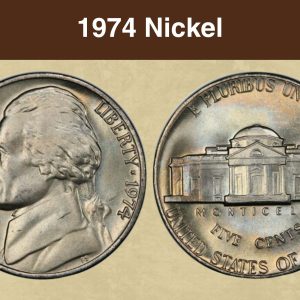
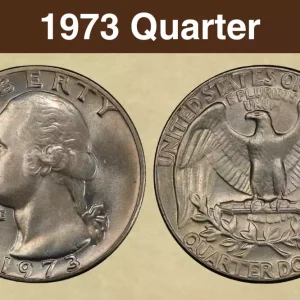
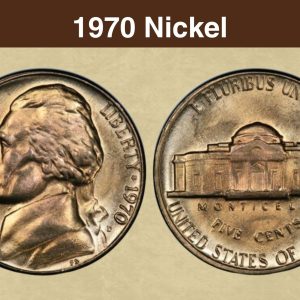
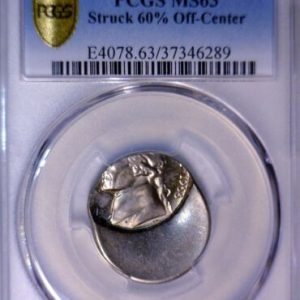
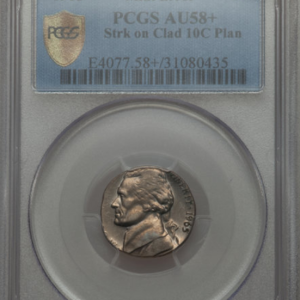
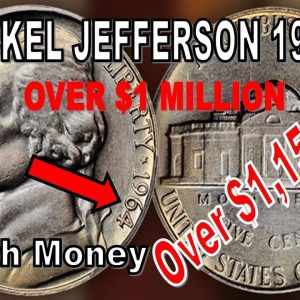
How much is a 1940 nickel worth today with no mint mark?
A 1940 nickel without a mint mark is from the Philadelphia Mint and is worth between $0.10 and $1.80 in circulated condition. Its value increases significantly with its condition, with uncirculated examples ranging from $1.50 to over $5, and high-grade coins (especially those with “Full Steps”) can be worth much more, even over $100.
What nickel error to look for?
Key nickel errors to look for include doubled dies, where design elements are doubled due to die strikes, off-center strikes, where the coin is struck outside its intended position, and mint mark errors, such as doubled or missing mint marks. Other valuable errors are speared bison on 2005 nickels, the 1943 double die Jefferson nickel, and 1937-D Buffalo nickel three legs.
Is there a rare 1940 nickel?
No, most 1940 nickels are not rare because they were minted in very high quantities. However, some are rare and valuable, particularly those in pristine condition, proof coins, or those with specific errors like “Full Steps” or the “Reverse 1938” error.
Where to find the mint mark on a 1940 nickel?
On a 1940 Jefferson nickel, the mint mark (if present) is located on the back of the coin, on the right side of Monticello. A “D” indicates it was minted in Denver, an “S” in San Francisco, and no mint mark means it was minted in Philadelphia.